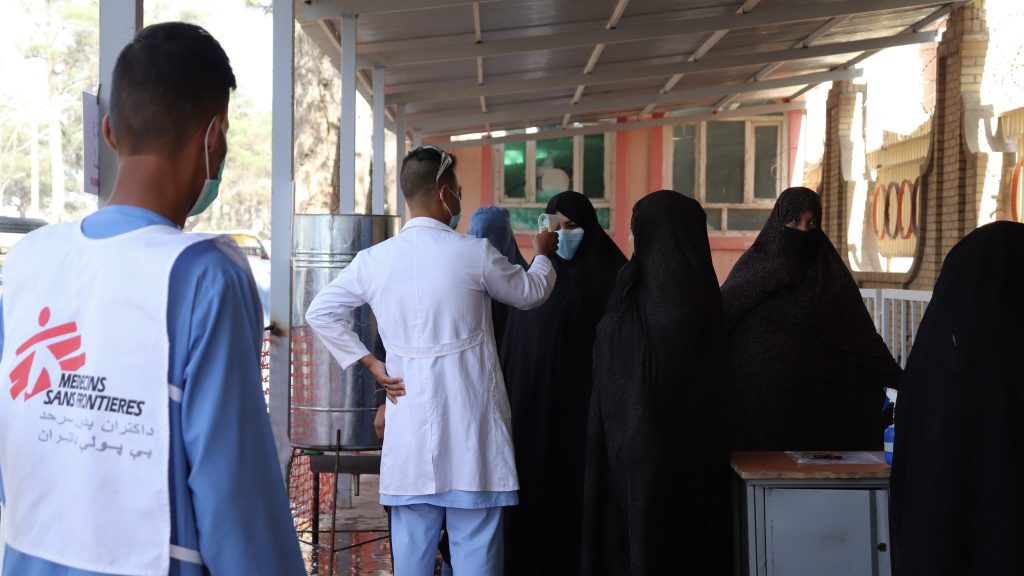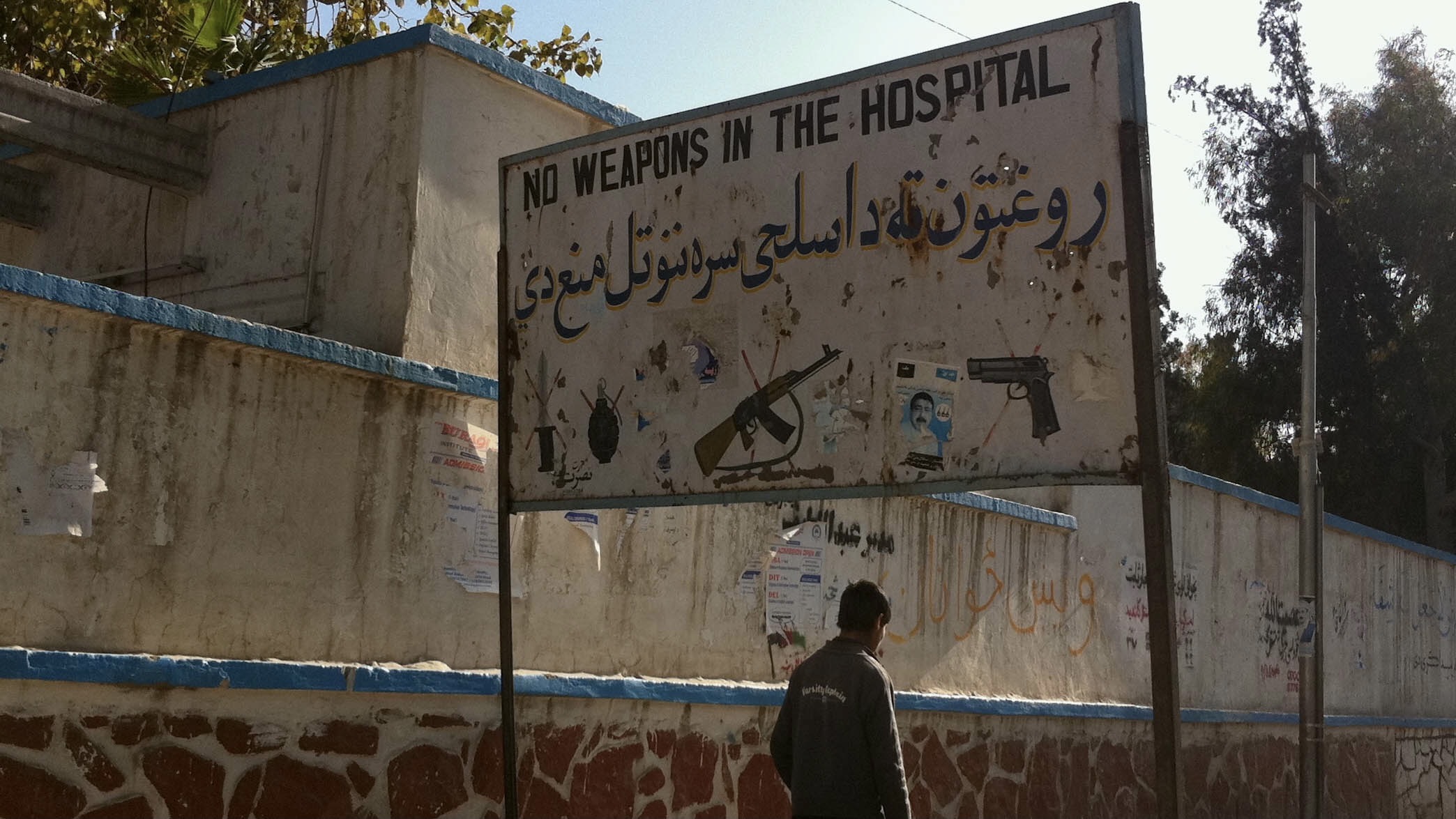Since the Taliban’s defeat of the US-backed government in Afghanistan, thousands who had been working in international organizations in the country fled. Meanwhile, the organization Médecins Sans Frontières (MSF), in a recent statement, said their “teams are staying put, providing essential medical care to people across the country.” They added that, “given the current instability, displacement of people and acute health needs, we are concerned about access to healthcare for everyone.” In another statement, they explained that more people are in need of healthcare due to injuries, and this has led to a temporary slowing of regular programs coordinated by the organization, including COVID-19 care.
In May this year, MSF released a report on the state of health care in Afghanistan. The report stresses that civilian deaths in the country have been constantly rising since 2009, when the organization started keeping track of the numbers after a 4-year hiatus. MSF’s experience shows that the health system in Afghanistan was not able to respond to people’s needs even before the Taliban took over power.

Dependence on international NGOs as health providers
The decision of some health emergency organizations not to leave Afghanistan at this point is of crucial importance for the continuity of care in the country. Over the last 10 years, a health system dependent on international NGO providers has consolidated, a model that has been determined by international donors.
In the early years of the US-led NATO intervention, donors saw contracting out services to civil society as a more cost-efficient alternative to building a national health system operated by the Ministry of Health. USAID, the World Bank, and the European Commission pushed for a universal health coverage approach promoted around the world, organized around a Basic Package of Health Services (BPHS) and Essential Package of Hospital Services (EPHS). Under this model, all citizens are guaranteed a set of free medical procedures, administered by international NGOs who operate through contracts with the Ministry of Health.
However, the ministry’s only job is to channel financial transactions. There is no central coordination of the content or system planning, so different health facilities are driven by the specific goals of each organization. MSF has questioned whether such an approach can ensure adequate provision of care. “Particularly the existing policy of awarding BPHS contracts for service provision to the lowest cost NGO provider, with the risks of undermining the quality of services on offer,” says the report.
Discrepancies between data and experience
In spite of dubious choices in health systems modeling, health indicators in Afghanistan have improved. In 2001, the maternal mortality ratio was 1390 per 100,000 live births, compared to 638 per 100,000 live births in 2017. Also, in 2001 the infant mortality rate was at 87 deaths per 1000 live births, while in 2019 it was almost halved at 46.
Dramatic improvements – at least formally – have been achieved when it comes to the accessibility of health facilities. According to data collected by the Ministry of Public Health, the increase in active health posts in the period between 2004 and 2011 was about fourfold.
However, differences in access to health care persist, and people are still forced to undertake long journeys to reach adequately staffed, operational health facilities. Some of the health facilities built by US contractors have been heavily criticized for their substandard quality. Multiple reports by the Special Inspector General for Afghanistan’s warned about buildings that were never put into function, or were too dangerous to use. They remain, however, counted in the official records, improving the formal statistics.
Even in cases where there is a nearby health facility, people still have to travel elsewhere because of reduced working hours or inadequate quality of care, shows the MSF report. Farooq Tariq from the People’s South Asian Association for Regional Cooperation (SAARC) says that this can be seen even in Pakistan, where many Afghans travel in order to reach healthcare that is unavailable locally.
“It seems that some kinds of care are completely unavailable in Afghanistan. For example, cancer treatment. A lot of people travel to Pakistan in order to access it. And often they go to the private sector for this: sometimes private trust hospitals have programs that reduce costs for poor patients, but this is not always the case,” says Farooq Tariq.
Conflict, distance and cost
International donors opened a budget line for health infrastructure, but it amounted next to nothing compared to military budgets. In 2018, military support to Afghanistan amounted to 4.1 billion USD, while all development assistance amounted to 3.8 billion USD. Earlier the difference was even starker, as in 2011 the country received 8.2 billion USD of military aid, and 6.8 billion USD for all other sectors. If we look at development assistance allocated specifically to health, we see that in 2018-2019 it amounted to less than 5% of all the donations directed to Afghanistan.
Money plays a big role in access to care for Afghan people. In 2020, 47.3% of the Afghan population lived below the national poverty line, so most of them are forced to borrow money or sell belongings to afford basic health care. In addition to non-medical expenses such as transport, according to MSF, “medication consistently ranked as one of the highest costs people incurred. In Kunduz (in the north) and Kabul, more than half of those interviewed had paid more than US$44 on drugs during a previous illness episode” – in a country where many live on less than 1.60 USD per day.
Almost half of those who took part in the MSF survey reported they had postponed seeking care during the past year because of concerns around conflict, distance, and cost. These issues are often intertwined: long distances to health facilities increase the cost of the journey, as well as the possibility of encountering a situation of conflict along the way – if one is lucky enough not to be starting from one in the first place.
“The civil war in Afghanistan did not end just because the NATO forces are retreating,” says Tariq. “We expect to see more people from Afghanistan traveling to Pakistan to access care in the weeks and months to come, as local capacities will not be enough to treat everyone in need.” The Taliban takeover of the country has led to an even more precarious situation when it comes to access to health care. During the height of the fight over the past days, Emergency and MSF hospitals in Lashkar Gah, in the southwest province of Helmand, were hit by a rocket and badly damaged. The latest political developments have only further weakened an already fragile health system.





